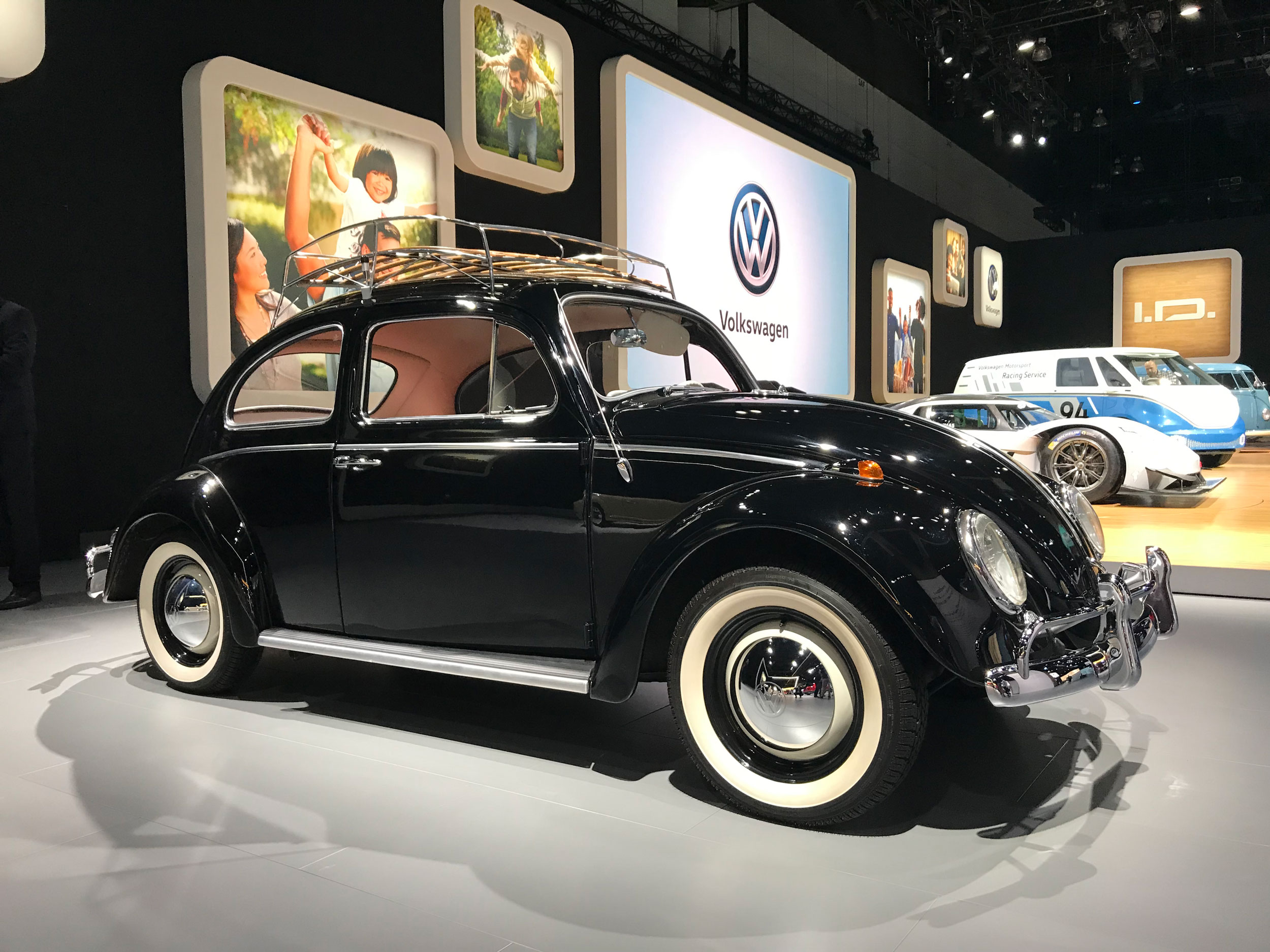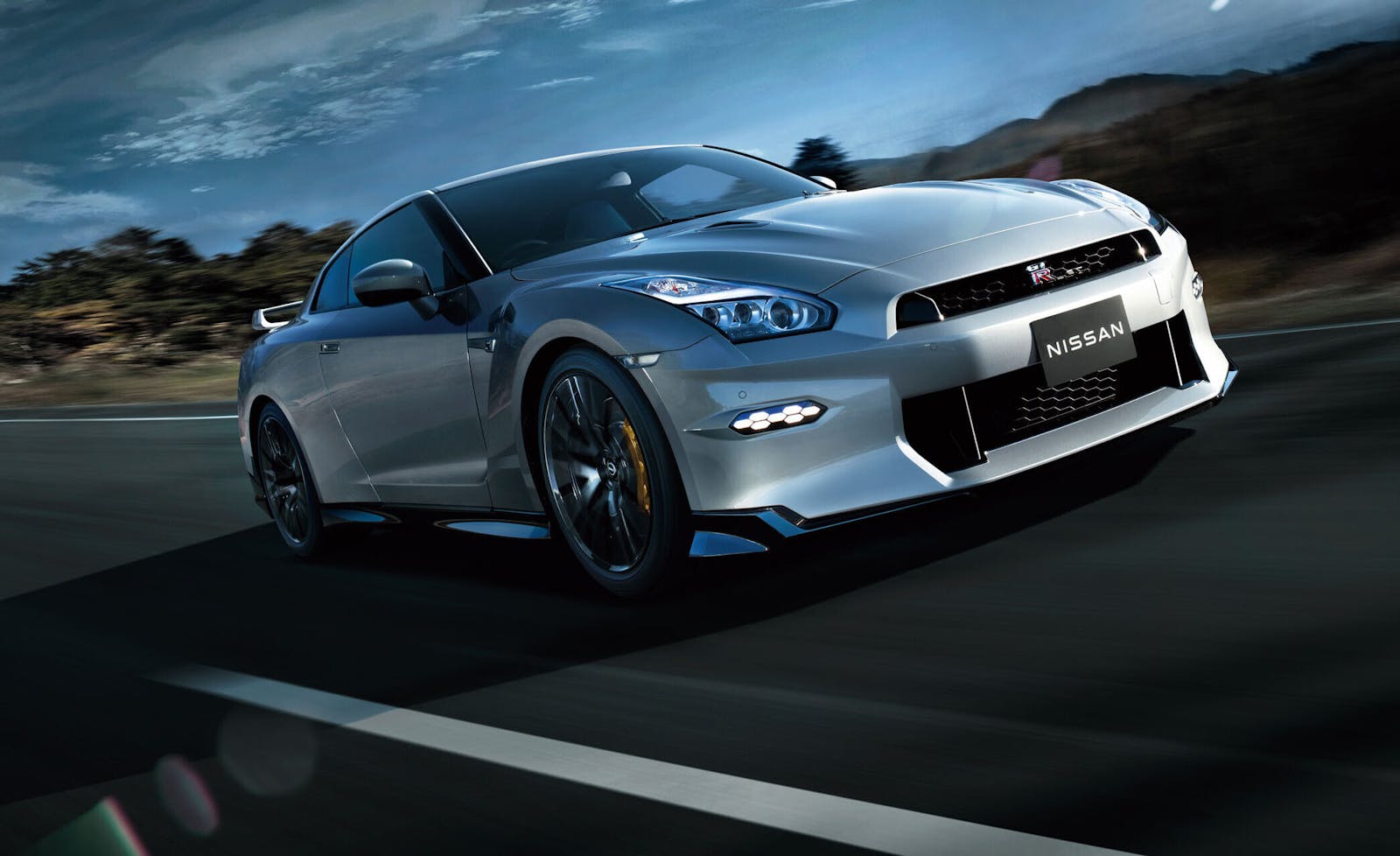Media | Articles
Why the Volkswagen Beetle is still a cultural icon after 80 years
During Volkswagen’s Los Angeles auto show press conference this week, Volkswagen of America’s new president & CEO Scott Keogh bragged that the VW Group would, globally, have 25 full battery-electric vehicles by 2025. But even as he enthusiastically showed the audience a video of the VW I.D. R electric-powered race car—which set a Pikes Peak record last summer—to illustrate the company’s fierce devotion to the future of electric propulsion, he was gesturing to a mint-condition 1964 Beetle sitting on the edge of the stage and reminiscing about his childhood, when his parents would stuff all five Keogh children into the family Bug. That’s right, seven people in a Bug. Scott and his sister were stuffed into the cargo shelf behind the rear seat.
Thus is the emotional tug of the Beetle on Americans. It’s something that filmmaker Damon Ristau, who made the documentary The Bug: The Life and Times of the People’s Car is very familiar with. His Beetle documentary, which premiered at the Big Sky Documentary Film Festival in 2016 and is now available on Amazon, iTunes, and other streaming platforms, is a loving homage to the greatest automotive cultural icon of the past century.
To mark the end of production of the New Beetle, Volkswagen of America brought Ristau to Los Angeles to explain his passion for all things Volkswagen to a group of media. Ristau also made a documentary about the Microbus (called, appropriately, The Bus) and is now working on a narrative feature film about the life of John Muir, who wrote How to Keep Your Volkswagen Alive: A Manual of Step-by-Step Procedures for the Compleat Idiot, the famous how-to book that helped millions of members of the counterculture keep their Bugs on the road and became its own cultural touchstone.
20181129185219)
As Ristau sees it, the Beetle is as famous as it is because of a unique confluence of historic, technological, design, political, and cultural events:
Marketplace
Buy and sell classics with confidence
- Collective human genius set out to solve a problem (mass affordable personal transport)
- Ferdinand Porsche created a practical, endearing design (others were attempting to do a streamlined people’s car at the time as well, including Hans Ledwinka with his Tatra)
- Brilliant advertising (the famous Doyle Dane Bernbach ads, both print and television, in the USA)
- Countercultural movement embraced the car as a symbol of personal freedom
- Hollywood blockbuster franchise, The Love Bug (Herbie), debuted in 1968 with perfect timing
- Worldwide mass production
- The end of production, particularly of the Type 1 in 2003, grabbed people’s attention
The film is a series of interviews with Beetle uber-fans, collectors, historians, journalists, and celebrity owners such as Ewan McGregor, whose first car as a teenager in Scotland was a lime green Beetle. (The McGregor family photo album pics showing a young Ewan sitting behind the wheel, moussed hair and all, are priceless.)
20181129185152)
20181129185128)
Ristau splices in lots of vintage footage of Beetles being transported by rail out of factories, TV ads, and film clips. There’s even a picture of a Beetle parked in the midst of the crowds at Woodstock. Volkswagen sold only two Beetles in America in 1949, and Ristau explains how the company was selling millions of them by the end of the 1960s.
More than 21 million Type 1 Beetles were produced through 2003, when the last one rolled off the production line in Mexico. The New Beetle, which launched in 1997, was built alongside the last examples of the Type 1 at the same plant. Of course, only serious Beetle fans call it the Type 1; Ristau points out that 75 countries and cultures have each come up with their own affectionate name for the Beetle. We Americans, of course, call it the Bug. In Germany, they call it the Kafer; in Brazil, the Fusca.
“There’s always an organic connection to the car in the nicknames it’s given, all over the world,” says Andrea Hiott, author of Thinking Small: The Long, Strange Trip of the Volkswagen Beetle. She’s interviewed extensively in the film.
The current Beetle is soon to be dead, and whether there will be a replacement in the near future isn’t clear. The Beetle is a symbol of Volkswagen’s past, though, and the company wants us to think about its electric-vehicle future. Ristau’s not so sure. He grew up in the 1990s, long after the Beetle’s heyday, but he sees a special place for this car, this name, “Beetle,” not just in VW’s past but in its future.
“I bet money that in 20 years there will be a fully autonomous Beetle,” he says, grinning. “They’ll bring it back.”


20181129185322)
20181129185332)
20181129185348)
20181129185234)

